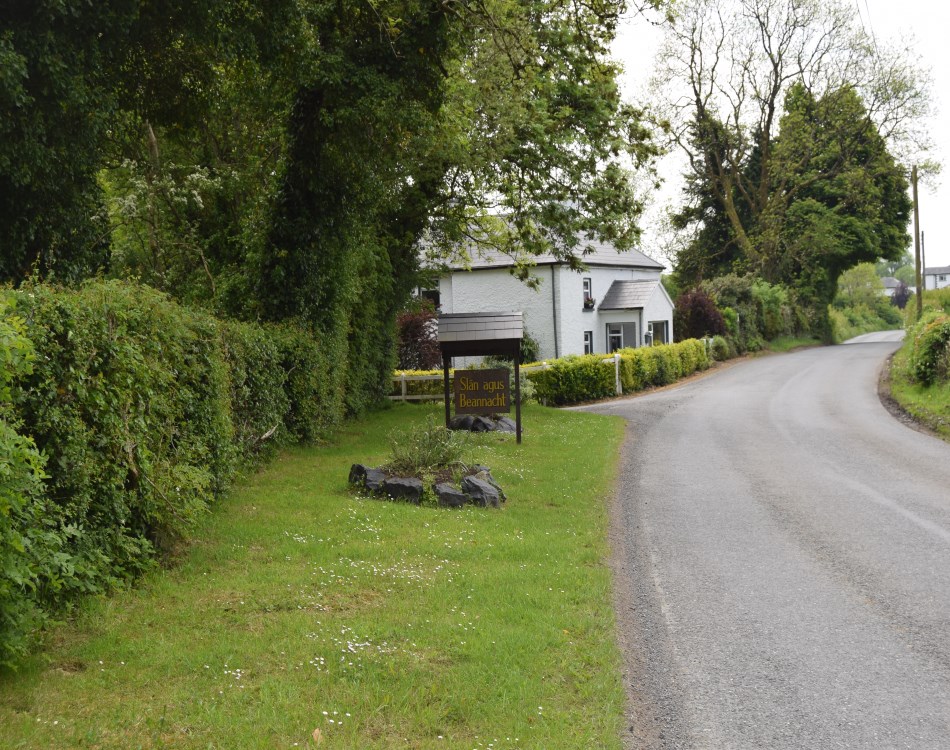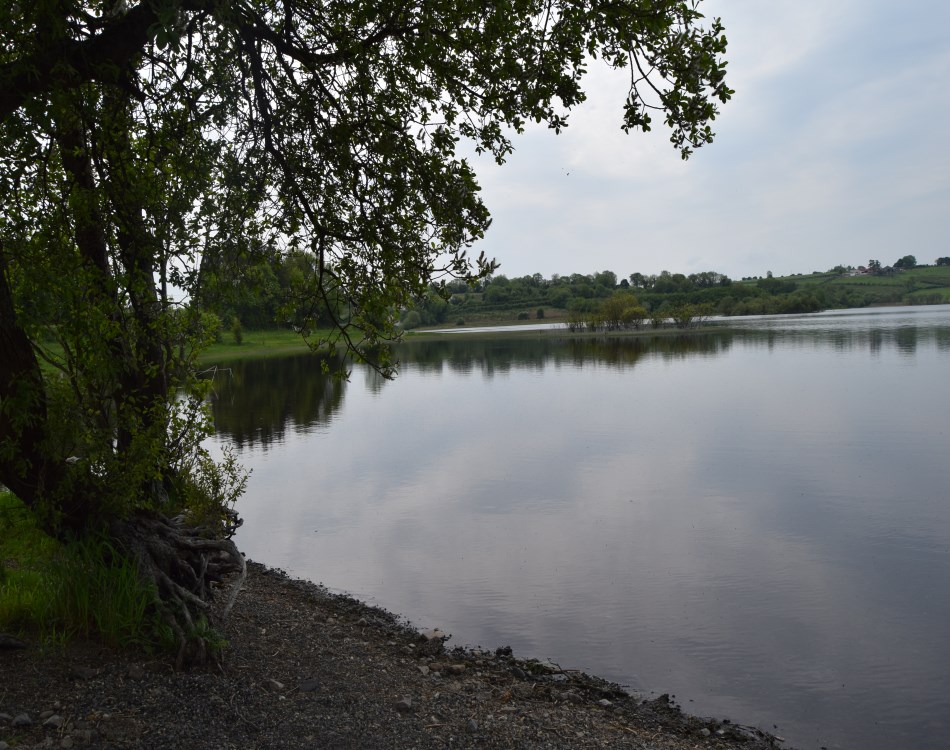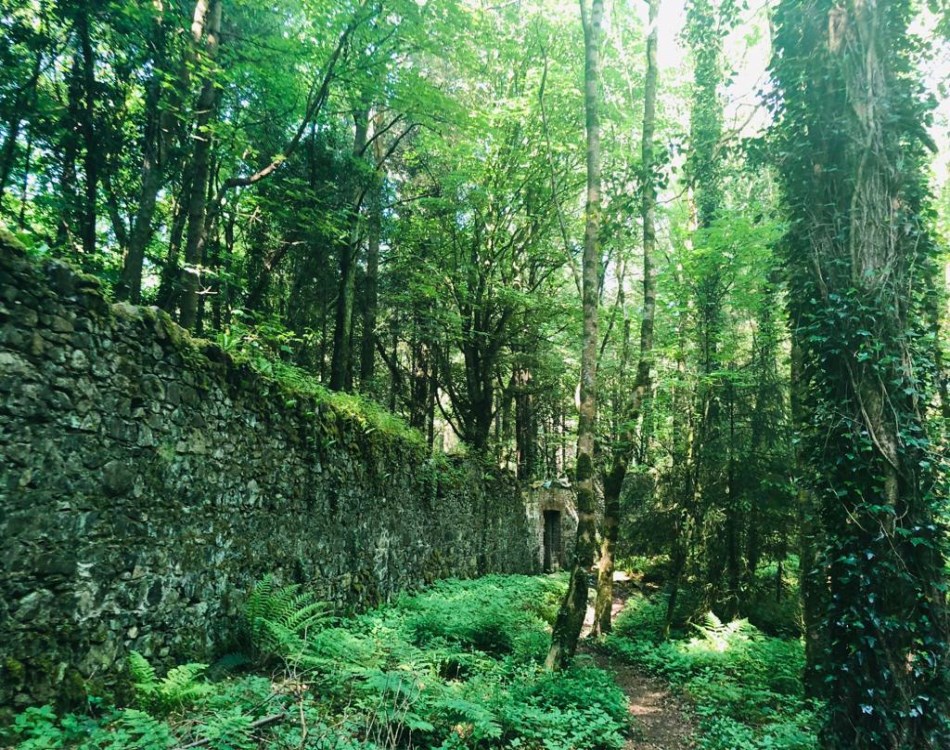Mullinalaghta
The name Mullinalaghta Mullach na Leachta is derived from two Gaelic words: Mullach - a ridge or hill, and Leachta - a flagstone. The area is peppered with beautiful undulating hummocks and hills, which explains the reference to the ridges or hill. The leacht or stone was often used as a sepulchral monument, hence we find the term used in the designation of local names. The name Mullinalaghta came from and is based on the number of stones or small crags that one may observe in fields adjoining the bog road, which runs through the townland of Larkfield. There are 11 townlands in the parish of Mullinalaghta.

History
Mullinalaghta formed part of the medieval territory of Annaly, largely corresponding to today's County Longford. It was under the control of the Mac Gearadháin (Gaynor) family, being referred to in sixteenth century documents as Muntergerran (Muintir Gearadháin). Ecclesiastically, it was under the control of the abbey of Inchmore in Lough Gowna, founded by Saint Colmcille in the 6th century. This was reflected by Mullinalaghta forming part of the civil parish of Columbkille and also being part of the same Roman Catholic parish until 1839, when it was joined with the Cavan parish of Scrabby to its north, with which it has since been united. The area has been hard hit by emigration, with the population declining from a pre-Famine peak of over 3,500 to its present population of less than five hundred.
The area is mainly agricultural, with dairy and drystock cattle farming and sheep farming predominating. The main centre of population is in the adjacent townlands of Cloonagh and Larkfield, which contains the Roman Catholic church (erected in 1939) and a graveyard including the site of an earlier church from 1832, as well as facilities such as a primary school, post office, community centre, shop and two public houses.
Things to See & Do
Mullinalaghta has much to offer the visitors, as the lakes in the area are some of the best for fishing in the County. A trip by boat from any of the shores will take you to Inch Island where the famous St. Columba had his first monastery. A trip back by Derrycassin Woods is a must. This mature woodland provides many beautiful walks on which you can appreciate the fine flora and fauna of the area.
Aghanoran Lake

Lying 2 kilometres east of Lough Gowna, Aghanoran Lake is a large lake and tributary of the River Erne. Good shoals of bream, roach, perch, tench, pike and trout can be found there. This internationally renowned lake attracts fishermen from Europe and further afield.
Local graveyard
The original parish church, which was built in 1832, was located beside the existing parish graveyard. The church has since been demolished and replaced with a new church. For two centuries this ancient graveyard has been the final resting place for the people of this parish. A database of all those buried in the graveyard was compiled by the local youth group, led by the local parish priest. For those interested in tracing their roots or for the curious visitor, there are copies of this database available in the church.
Mass Rock in Aghanoran
This piece of history was recently reclaimed and an iron cross was erected to mark the site. In penal times the priest said mass there because the Catholic religion was banned, so mass had to be said in secret. The priest would say mass with his back to the people who would kneel and pray in the hollow.
Mullinalaghta Church
The first church in Mullinalaghta was built when the parish was established in 1832. At that time there was no Catholic church in Gowna or Colmcille East. In 1939 the new church was built. It is of historical importance because the stones used to erect this building came from an old mansion, Dopping Estate in Derrycassan. The cost of construction was €10,000. The church was dedicated on 5 October 1941 by Bishop McNamee. In 1991 there were great celebrations to mark the Golden Jubilee of the Church.
St Patricks Well
This well is situated in the townland of Leitrim and Kilmore. St Patrick is reputed to have preached the faith on this spot. There is a spring well which seems to rise out of the rock. The ‘ballaun’ (hallowed stone) is still visible. It was probably used in pre-Christian times in pagan worship. It is the custom for mass to be celebrated here on St Patrick’s Day and for generations people have visited the well on this day. Above the well is a bush called ‘The Rag Cure Bush’. It is believed locally that this bush has a cure for warts. Locals tie a rag to the bush when they want to get rid of warts and as the rag withers the warts disappear. At the bottom left of the well is a sunken depression that it believed to be the knee print that St Patrick left behind when kneeling to say mass at the well.
Derrycassin Woods

Derrycassin Woods is the jewel in the crown in Mullinalaghta. A wonderful amenity for the local and the visitor. The wood which hugs the shoreline of Lough Gowna is the perfect place for a leisurely amble through the forest and along the lakeshore. In Penal times the land around the wood used to belong to the Dopping family. At that time there was a three-story mansion, beautiful walled gardens and an orchard. There was also a large estate that surrounded the house, which was later acquired by the forestry department who have since planted it to form Derrycassan Wood. Unfortunately the house itself was demolished in 1939, and the stones were used to build the new church in the village. Some of the house foundations and are still visible as are the walls of the garden and some lovely stone bridges. There are lovely walks to choose from, which can bring you along the river, by the lakeshore and through the lovely native flora and fauna. There are also the remains of ‘Rath’ in this wood, which would have been a dwelling place of some of the earliest inhabitants of these parts. The local community is involved in further developing the wood as an amenity and is keen to ensure that the native flora and fauna are maintained and protected so that generations of locals and visitors can continue to enjoy it in years to come.
Woodville Wood
Woodville Wood, was originally a private estate with its own house called Woodville House. The house was built in 1850 and was considered to be an 18th century paradise, with its golf course, lawns and tennis courts. The Graham family were first to occupy it and were later followed by the Duff family and then Colonel O’Malley. During the Duff family’s time, Roger Casement, who was hanged for his part in the fight for freedom, was a frequent visitor to the estate. The house was of great importance to the local area as many people were employed there as servants and labourers. The house was demolished at some stage and in 1935 the Land Commission bought the land and planted it with trees. Today the charming wood provides a place for lovely, secluded walks along the unspoilt lakeshore. There is also the remains of a rath in this wood. Through the wood there is also an excellent fishing spot where enthusiasts can while away the hours in peace and tranquility.



